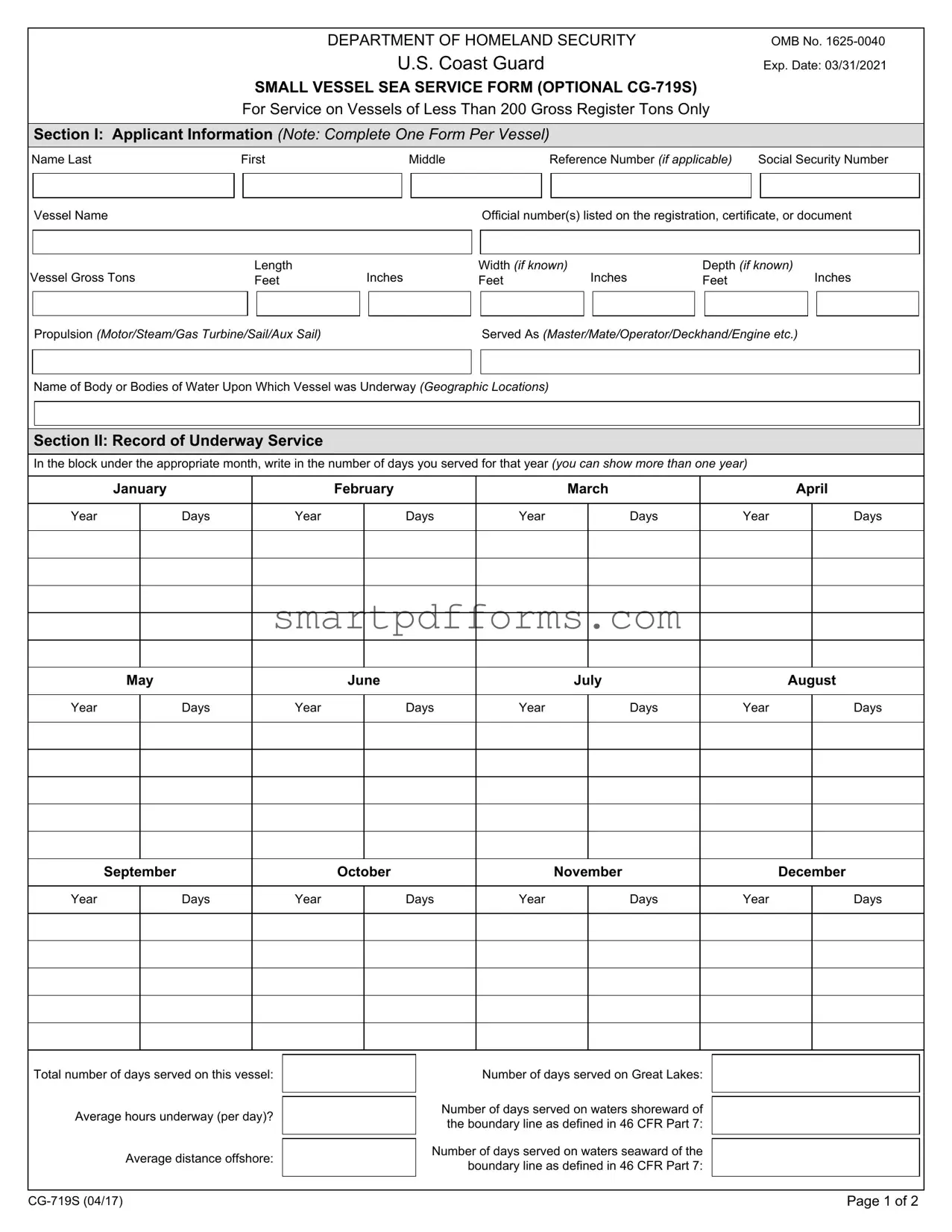
SMALL VESSEL SEA SERVICE FORM (OPTIONAL CG-719S)
Section III: Signature and Verification - Applicant Read Before Signing!
•Owners of vessels may attest to their own experience and provide proof of ownership per 46 CFR 10.232.
•Those who do not own their own vessel must obtain letters or other evidence from licensed personnel or the owners of the vessels listed per 46 CFR 10.232.
I certify that I have served on the above vessel as stated. I am making this statement in order that I, the applicant, may obtain a credential to operate a vessel under the provisions of Title 46 CFR, as applicable. I understand that if I make any false or fraudulent statement in this certification of service, I may be subject to a fine or imprisonment of up to five (5) years or both (18 U.S.C. 1001).
Signature of Applicant |
Date (MM/DD/YYYY) |
|
x
Owner, Operator or Master Read Before Signing! I certify that the above individual has served on the above vessel as stated. I am making this statement in order that the applicant may obtain a credential to operate a vessel under the provisions of Title 46 CFR, as applicable. I understand that if I make any false or fraudulent statement in this certification of service, I may be subject to a fine or imprisonment of up to five (5) years or both (18 U.S.C. 1001).
Signature and Title of Person Attesting to Experience |
Date (MM/DD/YYYY) |
|
x
Owner's, Operator's, or Master's Name
Email Address (Optional)
Owner's, Operator's, or Master's address and phone number
Street Address
City |
State Zip Code |
Phone |
|
|
|
|
|
|
|
|
|
|
|
|
|
|
|
|
PRIVACY NOTICE
Authority: 14 U.S.C. 632; 46 U.S.C. 2103, 7101, 7302, 7502, 46 C.F.R. 10.301
Purpose: The information is collected by the Coast Guard to determine whether an applicant meets the regulatory standards for issuance of a U.S. Merchant Mariner Credential (MMC). The Coast Guard evaluates an applicant's qualifications to determine compliance with the national and international requirements for issuance of the MMC, any endorsement within the MMC, and medical certificate.
Routine Uses: The information is used by authorized Coast Guard personnel who have a need for the record to determine whether an applicant is a safe and suitable person and qualifies for the MMC, any endorsement within the MMC, and medical certificate. In addition, the Coast Guard uses this information to maintain and update records of merchant mariner documentation transactions. The information will not be shared outside of DHS except in accordance with the provisions of DHS/USCG-030 Merchant Seamen's Records System of Records, 74 FR 30308 (June 25, 2009).
Disclosure: Furnishing this information (including your SSN) is voluntary; however, failure to furnish the requested information may result in the non-issuance of the MMC, any endorsement within the MMC, and medical certificate.
An agency may not conduct or sponsor, and a person is not required to respond to a collection of information unless it displays a valid OMB control number. The United States Coast Guard estimates that the average burden for this report is 15 minutes. You may submit any comments concerning the accuracy of this burden estimate or any suggestions for reducing the burden to: Chief, Office of Merchant Mariner Credentialing, 2703 Martin Luther King, Jr. Ave, S.E., STOP 7509, Washington, D.C., 20593-7509 or Office of Management and Budget, Paperwork Reduction Project (1625-0040), Washington, DC 20503.
CG-719S (04/17) |
Page 2 of 2 |


